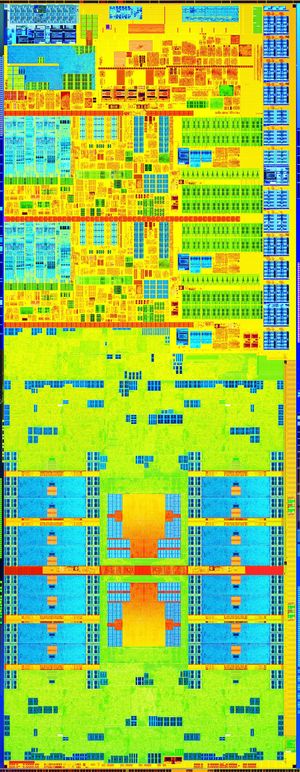Usually, a CPU that offers more processing power also requires more energy—and in a laptop, that results in shorter battery life. But with Haswell, Intel’s fourth-generation Core processor, the company promises to boost processing power and graphics performance while using less energy.
Haswell made its Mac debut in Apple’s new MacBook Air, released at the Apple Worldwide Developers Conference on Monday. So far, Apple has released only two versions of the Haswell ULT processor for both the 11- and 13-inch models: a 1.3GHz dual-core Core i5 processor capable of Turbo Boost up to 2.6GHz and 3MB shared L3 cache in the standard configurations; and a build-to-order 1.7GHz dual-core Core i7 with Turbo Boost up to 3.3GHz and 4MB shared L3 cache. And the question isn't if Haswell will be in other Macs, but when.
Macworld Lab has the new MacBook Air, and benchmark results, battery life tests, and a full review are in the works.
Better power management
With the sales of tablets biting into laptop sales—and with Intel’s lack of presence in the tablet market—Haswell was designed to help laptops better compete with tablets, a point reiterated Monday by Apple Senior Vice President Phil Schiller during the introduction of the new MacBook Air at the WWDC keynote. (Schiller actually referred to the “age of the iPad” - which it is - instead of tablets in general, but the point remains the same.)
At the Intel Developers Conference in September 2012, Intel provided details on the Haswell processors, pushing the processor’s power management and promising all-day battery life. And Apple has followed suit, boasting a robust 9 hours of “wireless Web” battery life on the 11-inch MacBook Air (up from 5 hours on the previous model), and 12 hours on the 13-inch MacBook Air (up from 7 hours).
To achieve such lofty battery life, Intel engineers made several improvements to Haswell, including changes to Haswell’s branch prediction (a CPU’s ability to determine what instructions will need to be executed), more efficient clock cycles, and better implementation of L1 and L2 cache.
Improved graphics
Intel’s integrated graphics chipset long had a reputation of being just good enough. For general use, they’re fine, but once you start doing more demanding work, the performance suffered. However, the company’s last generation of graphics, the Intel HD Graphics 4000, showed promise, offering a nice boost over previous HD Graphics chips.
The new integrated graphics chipset, the Intel HD Graphics 5000, promises even better performance by improving the graphics unit processor with more execution units (the part of the GPU that does the operations), along with other tweaks.
Apple says that the HD Graphics 5000 in the new MacBook Air is 40 percent faster than Intel HD Graphics 4000 found in the previous MacBook Air. Macworld Lab will be testing this claim as part of our benchmarks.
Overall performance
The emphasis with Haswell’s microarchitecture is power management and graphics speed. While Intel says the new CPU will be faster than its Ivy Bridge predecessor, the changes to the CPU processing aren’t major, and the boost may be 10 percent—a slight bump compared to, say, the boost experienced when transitioning from Sandy Bridge to Ivy Bridge processors. (Macworld Lab saw a 15 to 21 percent increase in the 2012 MacBook Air when it switched from Sandy Bridge to Ivy Bridge processors.)




